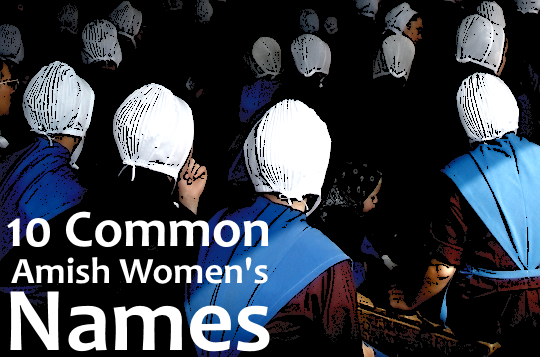The Amish Wedding Announcement
Lovina Eicher shares some happy news in her latest Lovina’s Amish Kitchen column:
After church services the bishop announced the wedding dates of two girls in our church. Mary and Danny chose September 24 for their wedding date, and daughter Loretta and Dustin chose October 1st for their wedding. Congratulations to both couples!
“Announcing” a wedding date, is, as it suggests, the practice of formally informing the community of an upcoming wedding. Rich Stevick gives more details on this practice in his book Growing Up Amish: The Rumspringa Years:
In the past, only parents and close friends knew far ahead of time about the couple’s intentions to marry. The rest of the community would find out when the official announcement was made by the deacon at the close of a Sunday service. This is still the most common procedure in the small, more conservative communities or affiliations. The deacon or bishop waits to publicly announce (publish) a couple’s intention to marry until one to six weeks before the wedding day. This custom originated in the sixteenth century in Europe, with the Roman Catholic Council of Trent. Initially known as the publishing of the banns, it was a formal announcement by a priest that a couple intended to marry. Later, Anglicans and other Protestant groups adopted the practice and brought it to the British colonies. In the past, the banns were announced in three successive Sunday services or feast days before the wedding, in order to permit church members or other citizens to disclose problems or irregularities, such as bigamy or the impending marriage of first cousins. Today Amish couples must still be published, and once the announcement is made on the Sunday after communion, they may marry as early as the following Tuesday. (pp 243-244)
There are some additional customs around the practice and it of course can vary across the many different Amish settlements.

The prospective married couple will be marrying within the church, so there is also an important process prior to announcement:
Any youths intending to marry must both be church members in good standing. Before the wedding is announced, the ministers or deacon in the bride’s and groom’s home districts must certify that both members of the pair are “in order” with their local congregations, meaning that they are accepting and abiding by the requirements of their respective community’s Ordnung. (p. 245)
If the young man is deemed to be “in order” he then receives the endorsement of his home ministers, in some cases in written form:
In some settlements, the ministers prepare a letter of endorsement, sometimes written in the ornate German Fraktur script and signed by each one of them. Finally, the suitor delivers the letter, known as the Zeugnis (testimonial), to the appropriate minister in the young woman’s home district. (pp. 244-245)
The bride-to-be is also confirmed in a similar process of questioning by the deacon.
Invitations are given following the announcement, and who gets invited depends on factors including the community and space available. Typically the father of the girl will invite every member of their congregation, while the young man will invite close friends and relatives. Members of the couple’s youth group will also be invited, either the entire group or select friends.

The couple will attend the youth singing for the final time the evening on the same day they are “published”. In the short time between being published and the day of the wedding, the couple will begin appearing together in public and “identify[ing] with the young married couples.” (p. 245)
So the wedding announcement essentially begins a couple’s public identification as a future household and family within the church. Of course the question remains as to how many people are surprised by the actual announcement. Rich notes the practice of secrecy about the wedding is more common in the “lower” (more traditional) churches. And some couples and families are no doubt better at keeping the secret than others. Regardless of how many know beforehand, it is certainly an exciting day for the couples and families involved. Now returning to the start of this post, congratulations to Lovina. She adds:
It’s always sad to me when another one leaves home, but I am happy for them, and I feel as if I’m gaining a son, not losing a daughter. Dustin is a very nice young man and so helpful with Loretta and her handicap. May God be their guide as they begin their life together.






Congratulations to Loretta & Justin
Congratulations to Loretta & Justin on their upcoming wedding. May they have a lifetime of happiness & be guided by God. God bless both of you.
Loretta and Dustin
You surprised us by saying Dustin is so helpful with Loretta’s ” handicap”..what is this about? You just left us hanging.
It’s not the main focus or point of the post, so I didn’t go into it. To be honest I am not sure what it is, as I don’t read all of Lovina’s columns, but I imagine it is probably discussed in some of them in more detail.